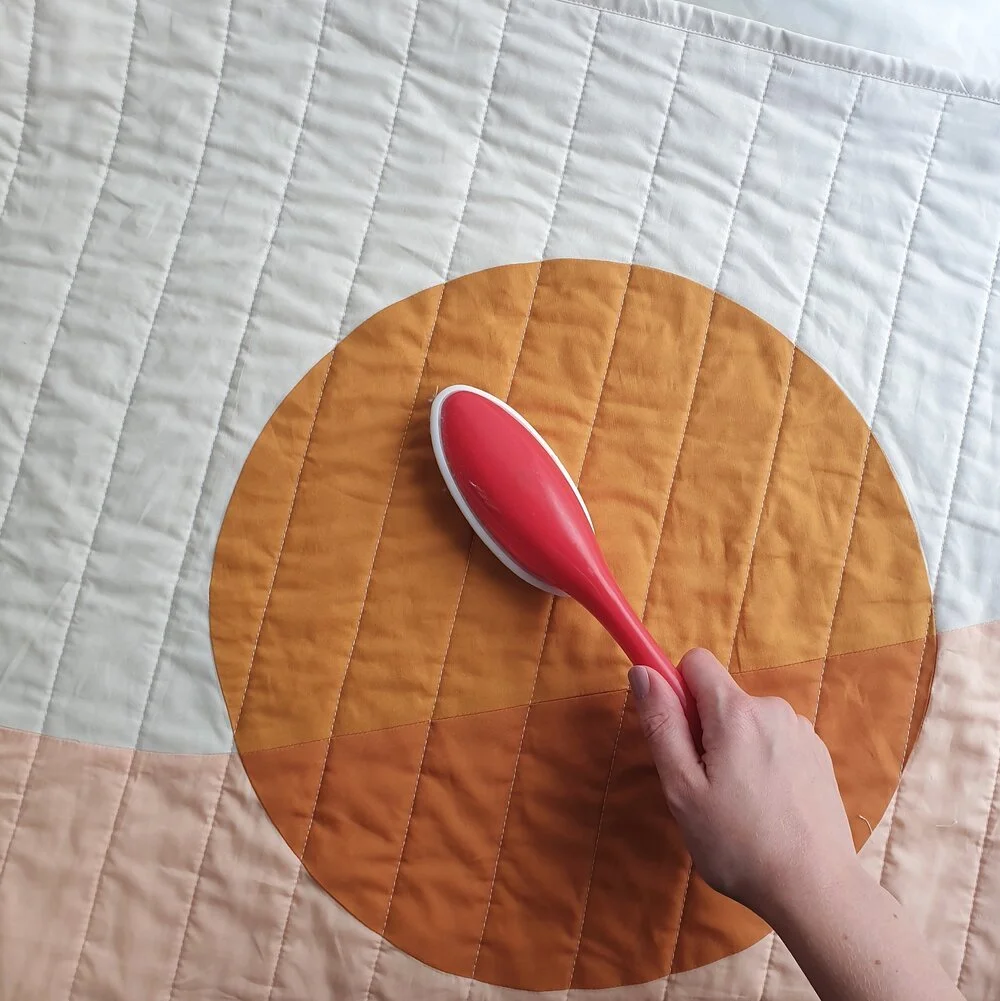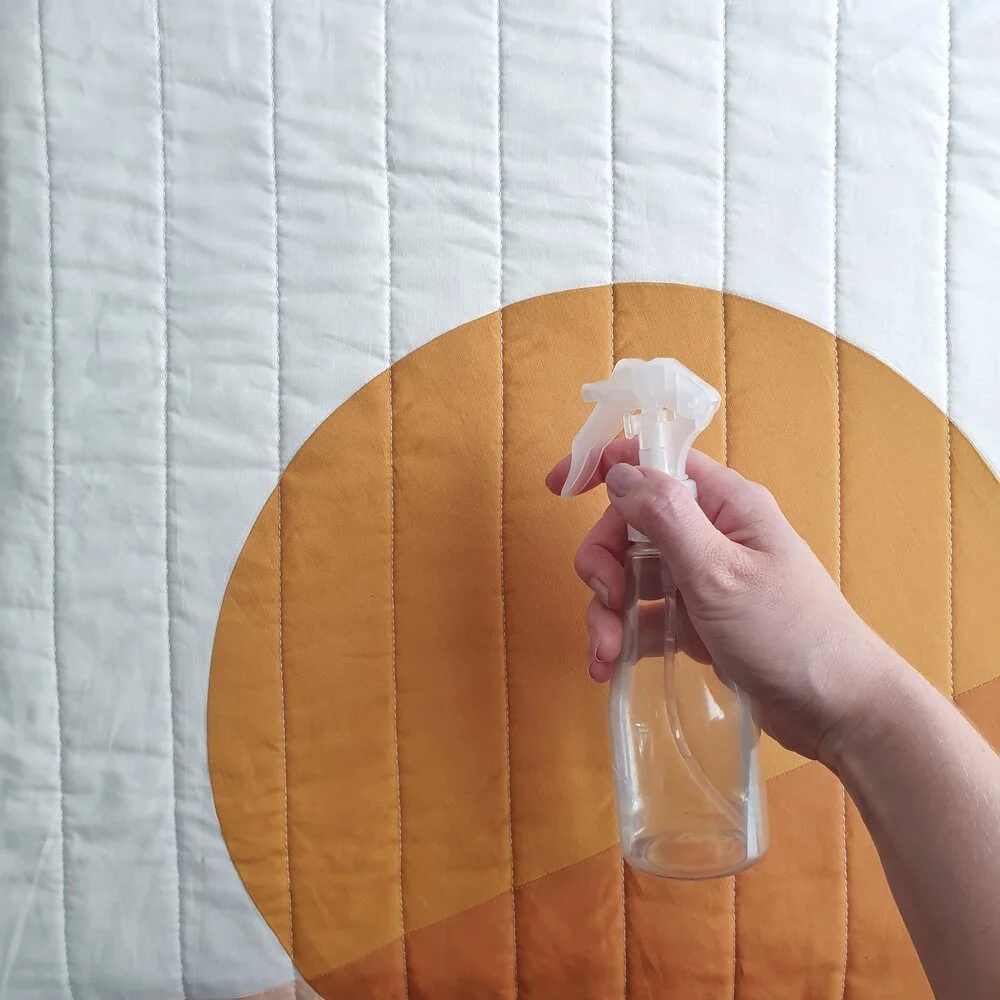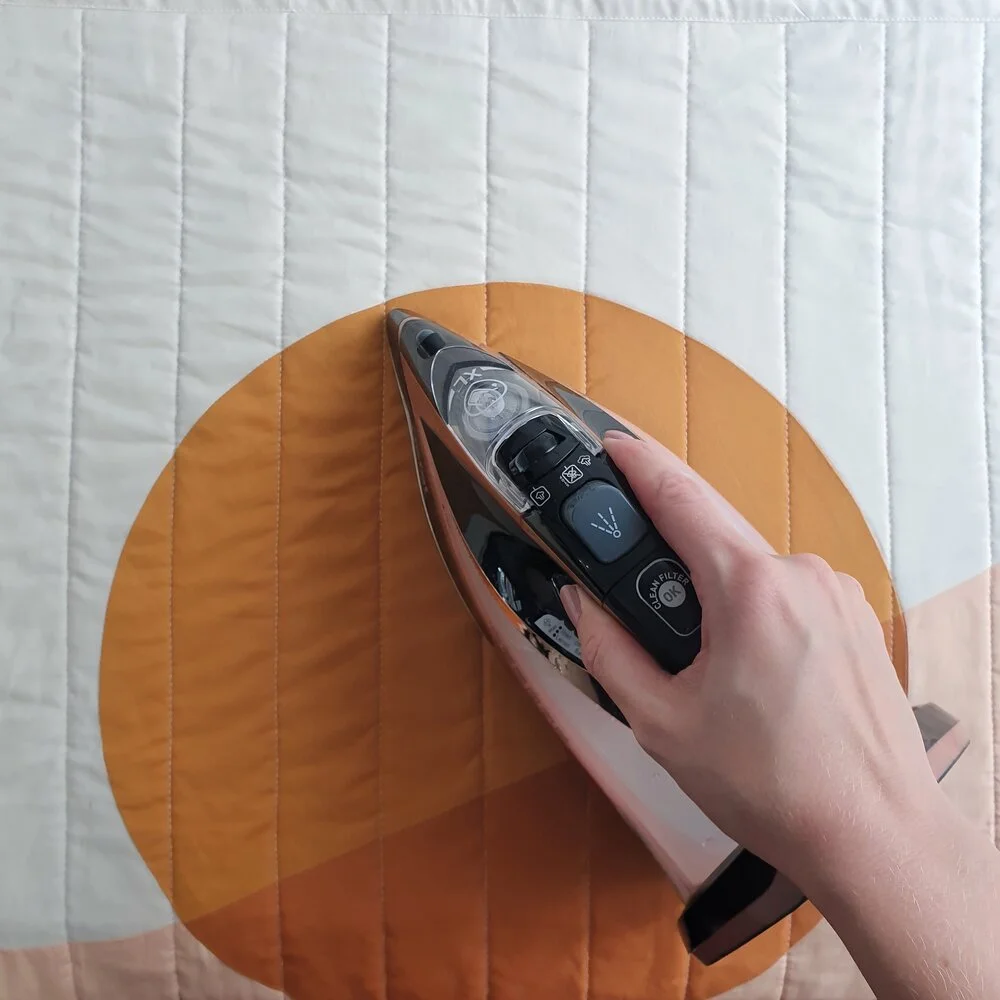How to care for your handmade quilt
Purchasing a handcrafted quilt is certainly an investment. These labour intensive textiles have been lovingly and mindfully crafted to last a lifetime. These are my tips on caring for your quilt.
Brush
Cotton has a tendency to attract dust, small threads, and particles. The best way I have found to remove these is by using a lint brush such as this one. Lightly brush all over being particularly careful around the edges and hanging sleeve.
Clean
If your quilt gets stained my recommendation is to spot treat the area. All of my quilts are machine stitched so would withstand a delicate washing cycle, but machine washing may cause slight shrinking or colour bleed, so I do not recommend it, particularly of your quilt is used for display purposes.
To spot treat a stain you can use a spray bottle like this one filled with deionised water along with a clean microfiber cloth. Lightly spray the area and use the cloth to dab the excess water. If the stain is stubborn you can use a mild detergent, I like this one. White vinegar is a great natural alternative stain remover. Spray again with the deionised water to remove the detergent or vinegar. You may need to repeat this a few times.
Dry
Use a clean towel to dab the area and then air dry either by lying flat on a clean towel or hanging on a clean line. I do not advise tumble drying as it can shrink the cotton fabric or loosen threads.
Iron
After cleaning or storing your quilt may be creased and crinkled. These are my ironing tips for a crease free quilt: Put your iron on the cotton setting, make sure the plate is clean, and fill the tank with de-ionised water to prevent water mineral staining. Use a steam setting to iron the back of your quilt and then turn over to iron the front. Be careful not to apply too much pressure around the label, edges, and quilt sleeve.
Hang
If your quilt is for display it’s a good idea to let it hang for a while to help it to settle and flatten. If any corners are turning up or the edges appear bumpy I find that using your hands to gently press the quilt against the wall helps to flatten and straighten it.
I hope that you found my quilt care and display tips handy. Please reach out if you have any further care questions about your purchase.





